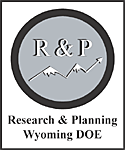Wyoming Unemployment Rate Falls to 6.2% in February 2011
The Research & Planning section of the Wyoming Department of Employment has reported that the state's seasonally adjusted1 unemployment rate decreased from 6.3% in January to 6.2% in February. It has been steadily decreasing since December 2009 when it was 7.7% and is now at its lowest level since May 2009. The U.S. unemployment rate also decreased, falling from 9.0% in January to 8.9% in February. It remained significantly higher than Wyoming's unemployment rate.
Over the year, Wyoming added 2,000 nonfarm jobs (0.7%). Natural resources & mining (including oil & gas) posted the largest job gains (1,900 jobs, or 7.9%) followed by transportation & utilities (600 jobs, or 4.5%), professional & business services (500 jobs, or 3.2%), and educational & health services (400 jobs, or 1.5%). Job losses were seen in retail trade (-1,200 jobs, or -4.2%), leisure & hospitality (-600 jobs, or -2.0%), and other services (-200 jobs, or -1.8%). Employment remained stable in wholesale trade, information, and financial activities.
From January to February, total nonfarm employment fell by 600 jobs (-0.2%). While this over-the-month decline is not statistically significant, the normal seasonal pattern is for employment to rise by approximately 1,000 jobs in February. Seasonal job gains in government (including public schools, colleges, & hospitals; 1,200 jobs, or 1.7%) were more than offset by seasonal job losses in retail trade (-800 jobs, or -2.8%), professional & business services (-300 jobs, or -1.8%), construction (-200 jobs, or -1.0%), and natural resources & mining (-200 jobs, or -0.8%).
Most county unemployment rates followed their normal seasonal pattern and decreased slightly from January to February. The lowest unemployment rates were found in Sublette (4.0%), Albany (4.9%), and Campbell and Niobrara counties (both 5.2%).
1Seasonal adjustment is a statistical procedure to remove the impact of normal regularly recurring events (such as weather, major holidays, and the opening and closing of schools) from economic time series in order to obtain a better understanding of changes in economic conditions from month to month.
